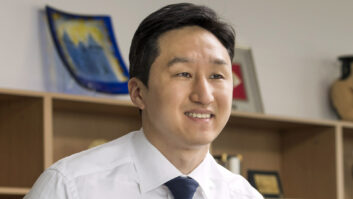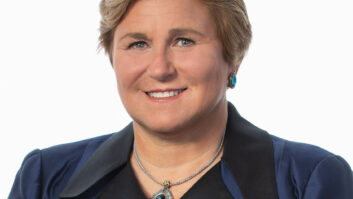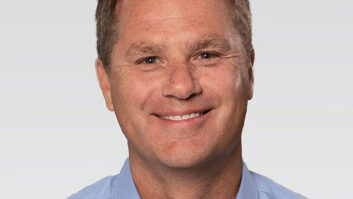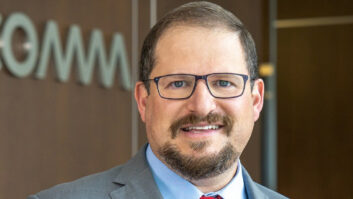In a star-studded, wide-ranging address that included the introductions of several new product platforms, Microsoft founder Bill Gates keynoted International CES on the eve of the show.
Gates’ talk embraced Microsoft’s vision of a world where all types of devices, from Internet-connected sewing machines to wristwatch-based information devices, will strive to keep consumers connected to the Web and the surrounding world as much or as little as they wish. During his almost 90-minute speech, which included some light Apple bashing and a self-deprecating look back at some of Microsoft’s past product goofs, Gates introduced several new “smart” technologies.
These include new wristwatches being co-developed with watchmakers Fossil, Citizen and Suunto, a Media Center PC from ViewSonic (see p. 32), and Media Center notebook computers from Toshiba and AlienWare.
Gates devoted a great deal of time to the upcoming wristwatch products. These are part of a series of simple devices that use Microsoft’s Smart Personal Object Technology (SPOT). The SPOT-enabled devices are powered by a 28MHz chip and have 512KB of ROM and 312KB of RAM. The watches will be the first SPOT products to hit the market when they ship this summer, Gates said.
The watches and future products can be programmed through a Web site to display various types of data, such as weather, traffic and stock news. This information is broadcast to each watch through a one-way sideband carrier broadcast by local FM radio stations. The network is dubbed DirectBand.
Gates did not go into detail, but said a program would find the data the user wants and then transmit it to the watch. The data is then called up through buttons on the watch and displayed on a 120 by 90 pixel display.
Pricing information was not available and Gates did not say if there would be a service charge to receive the data. Future SPOT devices could be mounted on home refrigerators, car dashboards and other places where specific types of data are needed, he said.
The remainder of the keynote focused on Gates’ desire to see just about every PC, A/V and home appliance networked in some capacity. The Las Vegas Hilton Hotel stage was liberally covered with products that can be networked through 802.11b WiFi, Bluetooth or another home networking system.
Getting devices linked in the home through a broadband network is the key, he said. Recent price reductions for Bluetooth chipsets will enable products with this technology to become more prevalent, and Microsoft is building more networking capability into the Windows OS so it will recognize what type of network-ready products are in an environment. Some future network and Internet-capable devices that should become available this year will run the gamut from exercise equipment to sewing machines that can store or get new patterns from the Web to an array of small and large smart devices.
Gates and some of his executives spent only a short period discussing the home PC’s role in the network home, but they said that since the PC is still the most powerful computing device in a home, it will still play a starring role.
ViewSonic, Toshiba and high-end PC maker AlienWare realize this, he said, and all will introduce Media Center products in the future. Toshiba’s Media Center notebook will be marketed under its Satellite 5200 Series. Media Center is an offspring of the Windows XP operating system that is geared toward running a home A/V entertainment system. It turns a PC into a PVR and through a supplied remote control can control networked entertainment devices.
To set the tone for some of these product introductions, Gates called on a slew of personalities via video to put everything into its proper perspective. These included President Bill Clinton, NBC Tim Russert, Warren Buffett, former Apple CEO John Sculley and L.A. Laker Shaquille O’Neal.













